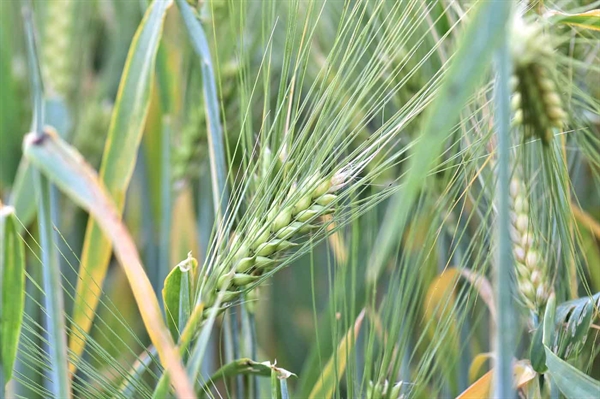
With a helping hand from Mother Nature, Virginia farmers have produced one of the best winter wheat crops in recent years, according to the National Agricultural Statistics Service.
A NASS report revealed Virginia farmers harvested 10.2 million bushels of winter wheat in 2022, a 27% increase from 2021. This year’s wheat harvest represents Virginia’s largest since 2018, when the commonwealth’s farmers reaped 13.8 million bushels.
Virginia farmers harvested 150,000 acres for grain in 2022, marking the third straight year of improved production following a record-low harvest of 105,000 acres in 2019. The average yield per acre also rose to 68 bushels this year, a nine-year high and 5 bushels per acre over the previous five-year average.
“Environmentally, I think we had a near-perfect season,” said Trent Jones, a Virginia Cooperative Extension agent in Northumberland and Lancaster counties, about wheat production in the Northern Neck.
Jones noted that some Northern Neck growers dealt with a wet fall that delayed seedings, but many of their fields had dried to suitable conditions by spring. Timely rain and proactive crop management, Jones said, helped keep disease to a minimum and allowed farmers to produce quality wheat.
“I would attribute (yields) to farmers in the Northern Neck—and throughout Virginia—who stayed on top of their crops and gave the plants what they needed when they needed it to produce the best possible yields under the conditions that were presented,” Jones said. “This year it seemed that everything came together … and it resulted in a crop that was very, very acceptable.”
Northumberland County grain farmer Mike Bryant noted that he had a decent wheat crop with bushels per acre registering in the high 70s. With input costs surging this year due to continued supply chain issues and market volatility because of the ongoing war in Ukraine, Bryant said he needed to be diligent to turn a profitable crop.
“We might have gotten a late start, but other than that, everything seemed to be a pretty normal year,” he said.
Robert Harper, grain division manager for Virginia Farm Bureau Federation, noted that the increased production was partially influenced by favorable wheat futures prices last August through October.
“There was some financial incentive for Virginia farmers as they looked into the future, and if they were able to generate an above-average yield or even an average yield, they saw an opportunity to profit from that futures price,” Harper said.
“Our seedsmen were prepared. They had the product available for farmers when they called to buy because they were seeing good prices, and then the weather last fall cooperated,” Harper said. “The positive outlook for pricing, the availability of the inputs at planting time, and the optimal planting conditions all proved to be crucial to successful harvests.
“The quality of Virginia’s wheat crop this year was excellent.”

